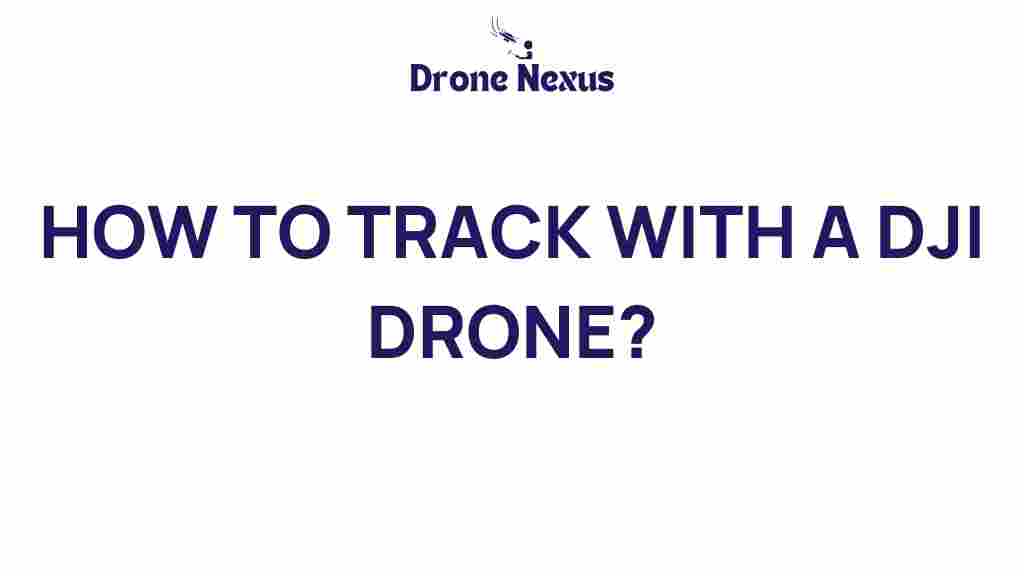DJI Drone: The Ultimate Guide to Tracking Effectively
In recent years, DJI drones have revolutionized aerial photography, videography, and surveying. Whether you’re a hobbyist or a professional, mastering the art of drone tracking can elevate your projects to new heights. This guide will provide you with essential techniques and tips for effectively tracking with a DJI drone, ensuring that you capture stunning visuals and data every time you fly.
Understanding Your DJI Drone
Before diving into tracking techniques, it’s crucial to understand the capabilities and features of your DJI drone. DJI offers a variety of models, each with unique specifications and functionalities. Familiarize yourself with the following:
- Flight Modes: Different modes such as GPS, ATTI, and Sport mode impact how your drone responds to commands.
- Camera Features: Understanding settings such as ISO, shutter speed, and framing can significantly affect your footage.
- Tracking Modes: DJI drones come equipped with several tracking modes, including ActiveTrack, TapFly, and Waypoints.
Preparing for Your Flight
Preparation is key to successful drone tracking. Follow these steps to ensure a smooth flying experience:
1. Check the Weather
Weather conditions can greatly affect your drone’s performance. Avoid flying in:
- High winds
- Rain or snow
- Low visibility
2. Update Your Firmware
Make sure your DJI drone and remote controller have the latest firmware updates. This can enhance performance and improve tracking functionalities.
3. Conduct a Pre-Flight Check
Before taking off, perform a thorough inspection of your drone:
- Check battery levels
- Inspect propellers for damage
- Ensure the camera lens is clean
Step-by-Step Guide to Tracking with Your DJI Drone
Once you’re prepared, follow these steps to effectively track your target:
Step 1: Select the Right Tracking Mode
Choose the appropriate tracking mode based on your project needs:
- ActiveTrack: Automatically follows a subject while avoiding obstacles. Ideal for moving subjects.
- TapFly: Fly in a predetermined direction by tapping on the screen. Useful for specific routes.
- Waypoints: Pre-program a flight path for automated tracking. Perfect for repetitive tasks or surveys.
Step 2: Set Up Your Drone
Once you’ve selected a mode:
- Launch the DJI GO or DJI Fly app on your device.
- Connect your drone and ensure it has a solid GPS signal.
- Calibrate the compass if necessary.
Step 3: Identify Your Subject
Make sure to identify your subject clearly. Use the camera view to frame your target, ensuring it’s within the drone’s field of view.
Step 4: Initiate Tracking
In your chosen tracking mode:
- Tap on the subject you want to track.
- Adjust the settings according to your needs (e.g., follow distance, altitude).
- Start the tracking feature and monitor the drone’s movements.
Step 5: Monitor and Adjust
While your drone is tracking, keep an eye on:
- Battery levels
- Signal strength
- Obstacle avoidance alerts
Be prepared to make manual adjustments as necessary for optimal tracking performance.
Troubleshooting Common Issues
Even seasoned pilots encounter challenges while tracking with their DJI drones. Here are some common problems and their solutions:
1. Loss of Signal
If your drone loses connection:
- Return to home (RTH) feature should activate automatically.
- Try to regain control by moving to a different position.
2. Inaccurate Tracking
If your drone struggles to track the subject:
- Ensure the subject is clearly visible and not obstructed.
- Adjust the distance setting in ActiveTrack mode.
3. Poor Weather Conditions
If conditions change unexpectedly:
- Land your drone immediately if visibility is compromised.
- Use the RTH feature if you cannot control the drone effectively.
Enhancing Your Tracking Skills
To become proficient in using your DJI drone for tracking, consider the following tips:
- Practice Regularly: Frequent flying will improve your skills and confidence.
- Study Tutorials: Online resources and tutorials can provide valuable insights into advanced techniques.
- Join a Drone Community: Engaging with fellow drone enthusiasts can offer support and knowledge sharing.
For more in-depth tutorials, check out this comprehensive guide on drone flying techniques.
Conclusion
Mastering tracking with a DJI drone opens up a world of possibilities for capturing stunning aerial footage and data. By understanding your drone, preparing adequately, and following the outlined steps, you’ll be well on your way to becoming an expert in drone tracking. Remember to practice regularly and keep abreast of the latest updates in drone technology. With patience and dedication, you will soar to new heights in your aerial endeavors.
For additional resources and community support, visit DJI’s official website for the latest news and updates on your drone model.
This article is in the category Applications and created by DroneNexus Team

3 thoughts on “Mastering the Skies: How to Track with a DJI Drone Effectively”